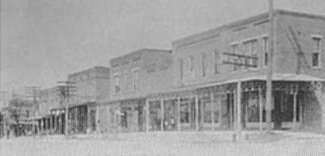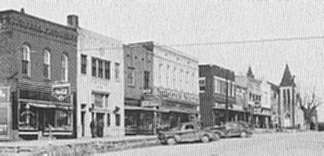Index
Acknowledgments
Preface
Introduction
The First Decades of A New County
Uneasy Tranquility: 1850-1860
Lost Tranquility: 1861-1865
Road to Recovery: 1866-1890
Period of Enthusiasm: 1890-1920
Post World War I
World War II to Present
Miscellaneous Pictures
Suggested Readings
Appendix
About the Author
World War II to Present
G. Tillman Stewart
From Henderson County by G. Tillman Stewart, Tennessee County History Series, Joy Bailey Dunn, Editor, Charles W. Crawford, Associate Editor, 1979, Memphis State University Press. Thanks to G. Tillman Stewart's son George Stewart for granting permission to publish this book.
In Henderson County 1630 men were drafted into various branches of service at the start of World War 11. The total number of volunteers and women who served is unknown. Males to the age of 45 and fathers with as many as eight children, were drafted. In this terrible conflict, 69 native Henderson Countians lost their lives and over 300 were wounded. Many heroic deeds by Henderson Countians were carried out and many residents honored not only their homes but their country. Immediately after the war, the American Legion and the Veterans of Foreign Wars erected a memorial in honor of those who sacrificed their all.
In January of 1946 the Henderson County Quarterly Court created a County Veterans Service office in accordance with the legislation of 1945. The office was financed from county funds and was authorized by the county court to elect a service officer. The court left the election of this officer to the local American Legion organization, which was the only active service group in the county at that time. Three days later American Legion members met at the Lexington city hall and voted on three candidates: Dick Logan, Mayreene Dennison, and G. Tillman Stewart. Stewart was elected and received a salary of $150 a month. This later increased to $200, and funds were appropriated for a full-time secretary. The Veterans Service Office processed all applications for the G. I. Bill, as well as pensions, compensation, hospitalization, and other veteran benefits. Two years after the creation of this office, the Veterans of Foreign Wars, a national service organization, was created. The VFW then shared with the Legion the responsibility of naming a the service officer.
Soon after the war ended, the government began returning bodies of soldiers who lost their lives for re-burial, when requested to do so by relatives. A military burial team was organized from veterans with H. B. "Brown" Williams as the first commander, and G. Tillman Stewart as chaplain. Later, Dick Veteto served as commander. All bodies were carried by train, and hundreds of people greeted the flag-draped coffins. Businesses closed for an hour during these arrivals. The Tennessee National Guard unit at Lexington later assumed these responsibilities.
A national guard building was erected with state and county funds. Among those instrumental in the establishment of the guard unit at Lexington were J. C. Fronabarger, County Judge E. L. Stewart, G. Tillman Stewart, and H. B. Williams. The team received a special citation in honor of its service from the State Adjutant General.
The Korean conflict, like that of Vietnam, was very unpopular; however, Henderson Countians fought bravely and represented the country well.
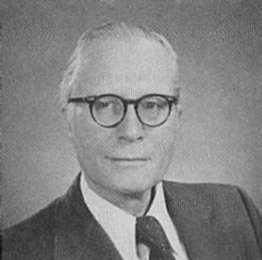
W. L. Barry
Government and Politics
In 1965, the Legislature reapportioned its districts and separated Madison and Henderson counties. Henderson was floated with Chester, Decatur, and Perry counties. W. L. "Dick" Barry was the first and only resident to achieve the speakership of the House and on his retirement in 1967, he became an administrative assistant to Governor Buford Ellington. Later, he became assistant state attorney general.
Agriculture
One of the drastic changes that was encountered in agriculture following World War II was the deterioration of cotton as the county's money crop. This was a result of the cost of fighting the boll weevil. By 1972, cotton fields ceased to exist, except in MIddlefork and Rhodes communities. At the height of "White Gold" some 25 cotton gins had operated in the county; in 1978, only the one at Middlefork still operated. Soy beans supplanted cotton as a row crop, since they were less expensive to grow, brought good prices, and replenished the soil.
Livestock production increased by leaps and bounds. Although Black Angus became popular, the Hereford and Shorthorn breeds still were popular. Ernest Wallace was one of the county's best producers of high grade Shorthorns; Paul Flowers was responsible for introducing Charolais into the county, and Max Helms, for introducing top Hereford.
Hog farming for profit continued to expand after the war. The Snider brothers, John and Bobby, specialized in Landrace breeds. Their completely modern facility houses some 400 head. Other breeds common in the county now are Hampshire, Duroc, Yorkshire, and Poland China. Guy Walker owns and operates a sale barn for livestock, where sales take place every Monday. For the past six years, a feeder sale has occurred at the Roberts' barn on Natchez Trace Highway, where high grade pigs command top prices.
The number of farms and farmers locally has decreased, but there are still many first class farmers, such as Haywood White of Ebeneezer; Hyder White, J. T. Meggs, and Robert Presley of Scotts Hill area; the Youngermans of Shady Hill; Ralph Phillips of Sardis; Herman and Norman Wright of Sheppard; Gleeman Rhodes of Rhodes Town; Elbert and Jewell Britt of Palestine; Thomas McCullough of Park Meal; Cratis Wadley of the Middlefork-Mifflin area; Richard Odle of Old Huntingdon Road; John M. Douglas on Old Wildersville Road; Williard Park, Philmore McPeak, and Rex Frizzell of Chesterfield; and Bud Overman of Old Timberlake Road. Auburn Powers, Lucian Cravens, and Herbert Lawler have promoted the the county's bee industry.
Doctors and Medicine
A new hospital was completed that can care for about 60 patients. A nursing home was built in late 1960 near the hospital, and another one was completed on Highway 20 early in 1978.
Physicians currently practicing locally include Drs. W. Howell, Warren Ramer, Striblin, Lowery, White, Crocker, and Wesley Jones. Recently, Warren Ramer, Jr., returned from medical school to join practice with his father. Dr. Mason Conger died on September 4, 1967, and Dr. Cornelia Huntsman retired thereafter. Dr. Gecova Maxwell practiced two years after the war before he died. Dentists in active practice include Drs. John M. Douglass, Maurice Bateman, L. E. Dickson, John Hugh Sullivan, and Larry Randy Woods. Ben Jarrett was killed in 1956 in an accident. Optometrists practicing include Drs. Wayne A. Hinson, David Lawler, Bennie McDaniel, David N. Montgomery and Cole Chambers who retired in 1978.
Transportation
Contemporary times witnessed the end to passenger railroad service, and freight trains began to average two a day instead of the previous dozen. The trucking industry, for the most part, has supplanted railroads in the hauling of freight, although some heavy freight still moves in and out of Henderson County by rail.
Improvements made in local highways since the war included Highways 20 and 22 being reworked and repaved in most places; Highway 22 extended to Millegeville; Highway 22A, the original road that goes through Jack's Creek, Enville, and Milledgeville, rejoins Highway 22; Highway 104 has been repaved; and Interstate 40 crossed the width of northern Henderson County. There are two exits to 1-40 in the county, Exits 22 and 104. These exits have caused businesses to be built and have stimulated growth at Parker's Crossroads.
Senior Citizens
In 1974, a group known as the Diamond Set was organized for retired people. It first met once a month at the Methodist Church in Lexington, then later at the Baptist church. As the group increased, the city of Lexington provided it with the old city school building, and the Senior Citizens' Organization came into being and affiliated with its national and state organizations. The building later was renovated and became the Civic Center. Auburn Powers was one of the leaders who worked untiringly for the welfare of the elderly. With federal appropriations and state and local aid, meals are served each week-day to the members. Scotts Hill senior citizens have purchased a building which they have renovated with the aid of a $28,000 grant and other funds. Gordon Turner, who has successfully completed a term on the Commission on Aging, was instrumental in securing the grant.
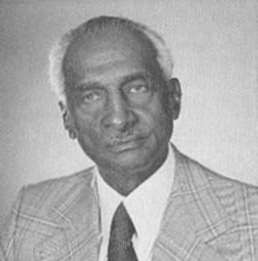
A. L. Robinson, former teacher, coach,
and principal of Montgomery School, Lexington,
served as director of federal programs for
desegregation and is now retired.
He was recently appointed by Governor
Lamar Alexander to the Commission on Aging.
Education
With the war over, the new interest in education resulted in consolidation, better equipment, and improved qualifications for teachers. The first building in the consolidation program was Beaver, which eliminated ten one- and two-teacher schools.
Complete consolidation began in 1956 when the county board of education voted to eliminate all one- and two-teacher schools and requested the county court to provide proper funds. The court did respond, and a bond issue was ordered to fund the program. Three new sites were chosen for elementary schools: Pin Oak, Southhaven, and Westover. Bargerton and Reagan were also to be part of the system, and improvements were made at Scotts Hill and Sardis. Later, a new building was voted for Park Meal which consolidated the Pritchard school. A $135,000 addition was made at Lexington High School in 1955-1956.
These changes were made before the integration of schools in 1964. Actual desegregation of schools occurred in 1967 when the board of education voted, with a minimum of disorder, to abolish the dual system. Montgomery School was abolished in regard to use for black students only. Its high school students were transferred to Lexington, and its elementary students chose between attending Lexington city school or any of the county consolidated schools where transportation was furnished.
Integration overcrowded Lexington High School, and in 1963, it was recommended to the board that a new school building be erected on the campus, that a new building be erected at Scotts Hill, and that general improvements be made in the entire county system. The county court approved the board's recommendations, and a one-cent sales tax was recommended to finance the bonds. The final cost of the improvements was approximately one million dollars.
In 1973, the Legislature passed an act which provided that the state construct, equip, and operate a building if a county or city furnished land. These schools were to teach high school students skilled trades. After study, the state commissioner of education approved Lexington as such a site. The county school board purchased 20 acres of land from Joe Davis adjacent to the Montgomery school property for the building's construction.
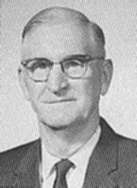
W. L. Bobbitt
After more than 30 years as principal of Lexington High School, the beloved W. L. Bobbitt retired at the end of the 1962-1963 school year. On August 31, 1974, W. L. Bobbitt Day was declared, and hundreds of his former students were present at the ceremony where he was presented with a new car and other special honors. Bobbitt was replaced by R. C. Rumfelt who resigned in 1967 to accept a position with Jackson State Community College. Rumfelt was succeeded by Casey Vinson who resigned two years later to work at Dyersburg State Community College. Bill Shelby then served as the principal for the school until 1977 when he assumed another such position at Franklin. Shelby was followed by Ira C. Powers.
Lawyers
Attorneys who practiced after World War II are Joe C. Davis, L. Stewart, E. W. Essary, Jr., Terry Wright, and Robert E. White who died on January 14, 1971. Attorneys now practicing Lexington include W. L. Barry, his partner Charlie Walker, Billy Brooks, William Martin, Carthel Smith, and Howard Douglass. Brooks is the county attorney, and Douglass is assistant attorney general.
Religion
Post World War II years spurred new construction or complete renovations at such area Baptist churches as Bible Grove, Central Grove, Chapel Hill, Corinth, Lexington, Mazies Chapel, Mt. Ararat, Mt. Gilead, Oak Grove, Ridge Grove, and Union. New Methodist churches were built at New Bethel and New Hope while renovations were made at Nebo, Poplar Springs, Sardis, and Shady Grove. A new building was erected at the Center Hill United Primitive Baptist. Renovations, repairs, or new buildings were constructed for Bargerton, Christian Chapel, Dyer's Chapel, Juno, Lexington, Sardis, and Stray Leaf Churches of Christ. Pentacostal churches were organized and built at Lexington, Palestine, and Ridley's Chapel; new Cumberland Presbyterian churches were built at Lexington and Palestine; a Church of God AME and an Assembly of God Church were built in Lexington; and Pilgrim Rest Negro Baptist Church at Lexington was completely renovated.
Economics
The postwar economy of Henderson County has been good with assets of five area banks reaching approximately $50 million. Factories in the county employ some 3500 people with payrolls of $1,750,000 per month. County tourism provides a tremendous asset since Natchez Trace Park and lakes formed by the Beech River Watershed attract thousands of people each year.
|
Lexington, Monroe Street, 1900 |
Lexington, Monroe Street, 1946 |
Lexington
The current population of Lexington now is estimated at over 6000. The city has become highly industrialized with many businesses and 25 factories. Beech Lake Shopping Center draws customers from surrounding counties. Even when businesses moved to shopping centers, the uptown business in Lexington remained good.
The government of Lexington consists of a mayor and seven aldermen, each serving a two-year term. In 1970, the police department was comprised of 13 men, a tremendous improvement from 40 years before when it consisted of a chief and one assistant. In 1977, there was one fire station' with four full-time personnel and 22 volunteers. Garbage disposal was done by municipal service with one pick up each week for residential and twice weekly for commercial.
Four freight lines serve Lexington: Meadows Motors, Volunteer Freight, McLean Trucking Company, and Mid-South Transport Lines. Lexington has an excellent airport, Franklin-Wilkins, located one mile from downtown. The 3600 x 75 foot asphalt runway is lighted, and the field has an administration building which is attended during daylight hours.
Lexington's radio station, WDXL, has both AM and FM programming. One of two educational television stations, WTLD, has its broadcasting facilities in the county and identifies itself as Lexington, Tennessee.
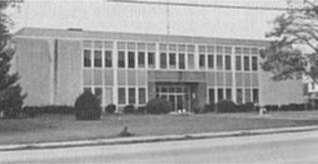
Present county courthouse, 1958
W. T. Franklin, Jr., bought the Lexington Progress in 1946. A World War II veteran, Franklin has served as president of the Tennessee Press Association and as vice-president and director of the Tennessee Press Service. The Progress under his leadership has received numerous awards. The new paper, the Henderson County Times, was established in 1978 by Lynn Pratt.
In April of 1956, a tornado hit Lexington near Barnhill Street and made a clean sweep northwest of the city. It came at a time when most people were working, but some were on their way home. The NYA building on the Lexington High School campus was completely destroyed and the gymnasium severely damaged with an estimated $1,000,000 damage done. One woman was killed; 15 were injured, four seriously.
Sardis
Sardis has experienced a complete change in its business structure since the war. The town has continued to grow despite a the fact that no factory has located in Sardis. Van Smith is the mayor of Sardis, Larry Creasy is recorder, and Larry Lewis, J. W. Creasy, Gerald Roberts, George Maxie, and Lon C. Menon are aldermen. Sardis has three churches, Methodist, Baptist, and Church of' Christ. Business firms there are: Danny Johnson Studio, Sardis Variety Store, Kelley's Feed Store, the Cloth Shop, Nelms Beauty Shop, Scotts Service Station, Macia's Cafe, Peoples Bank, Herman's, Dan's Market, Pit Shop Cafe, Roger's Service Station, 0. W. Hanna's Used Cars, Phillis Bartholomew's Beauty Shop, Bartholomew's Trucking Company, the Beauty Spot, Allene Phillips' Back Hoe Service, Bill Phillips Drag Line, Roy Medlin's Back Hoe Service, Montgomery's Taxidermy, Ce-Mars Leather Goods and Horse Supplies, Industrial Exterminating Company, and Crews and Sons Angus Farm.
Scotts Hill
Scotts Hill also has grown considerably since the war with a population now estimated at 700. Former mayors are Gordon Turner, Hay Taylor Powers, and Clayton Tarlton. Wilson Miller is its present mayor. Scotts Hill has a well organized fire department with a modern truck and has a full-time police department. Two factories are in operation which employ 300 people with an estimated payroll of $30,000 per week. There is an American Legion Post, a Lions Club, and a Jaycees organization. A new post office has been built since the war, and a new bank is being built.
The following are businesses located at Scotts Hill: Austin's Cafe, B-Mart Grocery and Gas Station, Buck's Lumber Company, Citizen's State Bank, City Drugs, County Curls Beauty Salon, Campbell's Sign Shop, Charlotte's Beauty Salon, Ron Dunnavant Auto Service, Dennis' Tavern, Earl Dyer's Pool Room, E. E. Rhodes Furniture, Elgin's Drygoods, Farmers' Feed and Supplies, Farmers Bank, Franks Coin-Matic, Helms Lumber and Building Supplies, Ricky Hughes Grocery & Market, Appel Corporation, Kelly's Grocery, Kolpac, Johnson's General Merchandise, Jean Pipkin's General Merchandise, J. M. Brasher's Sales, Pipkins, M.F.A. Insurance Agency, McCormick's Plumbing & Wiring, Redford Grissom's Service Station, J. E. Taylor's Grocery, and Appliance, and Reda, Dale McCormick.
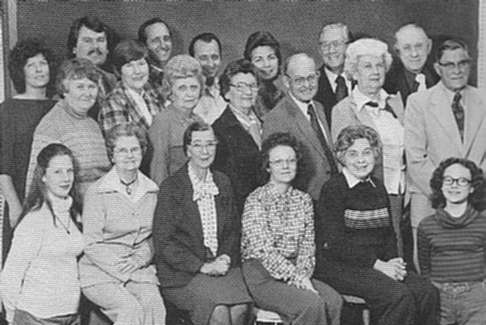
Henderson County Historical Society, 1979-1980. Left to right: front row, Linda Houston, 0. D. Kelley, Minnie Adams, Carol Kelley (President), Arthurlene Hinson (Vice- President), Brenda King; second row, Ollie Faye Rhodes, Adelaide Lewis (Reporter), Louise Dodds, Elizabeth Lee, C. F. Lee, Virginia Butler, Ashley Adams (Director); third row, Phyllis McDaniel (Secretary), Steve McDaniel (society's first president), Dan Wood (Director), Barry Wood (Director), Lutie Houston, Auburn Powers, G. Tillman Stewart; not present, Ethel Bailey, Brenda Fiddler, Johnny Casselberry, Ann Fiddler, Clay Crook, Kenneth Houston, Charles Fiddler, Inez King, Denise Houston, Bella Ramsey, Benjamin Rhodes, Marie Stanfill, Marilyn Williamson, Mary Rushing.

